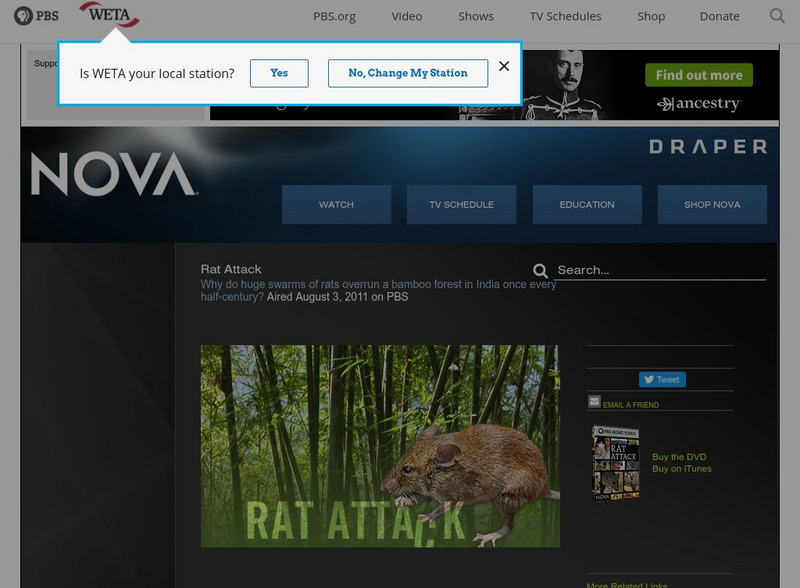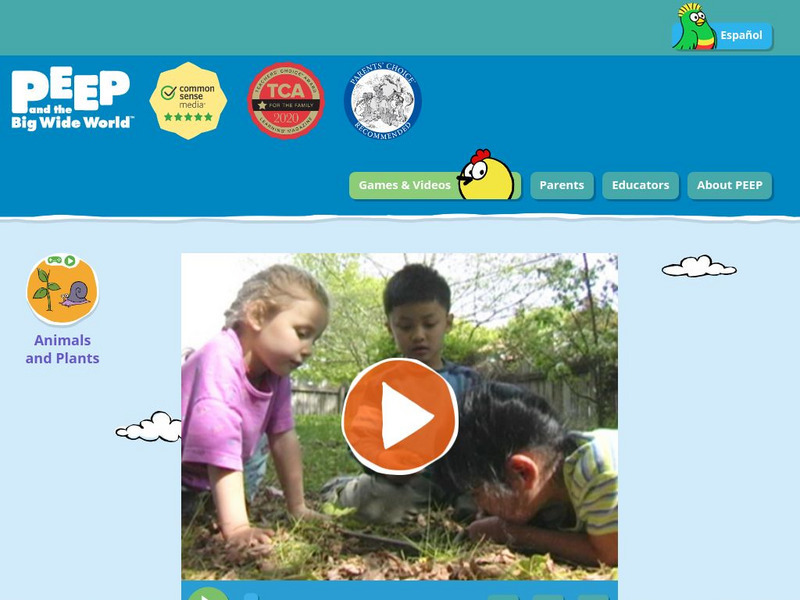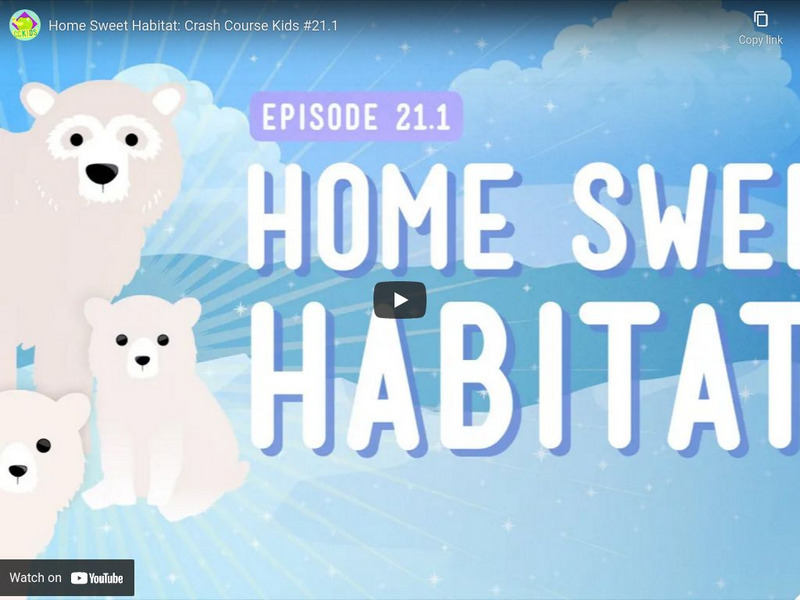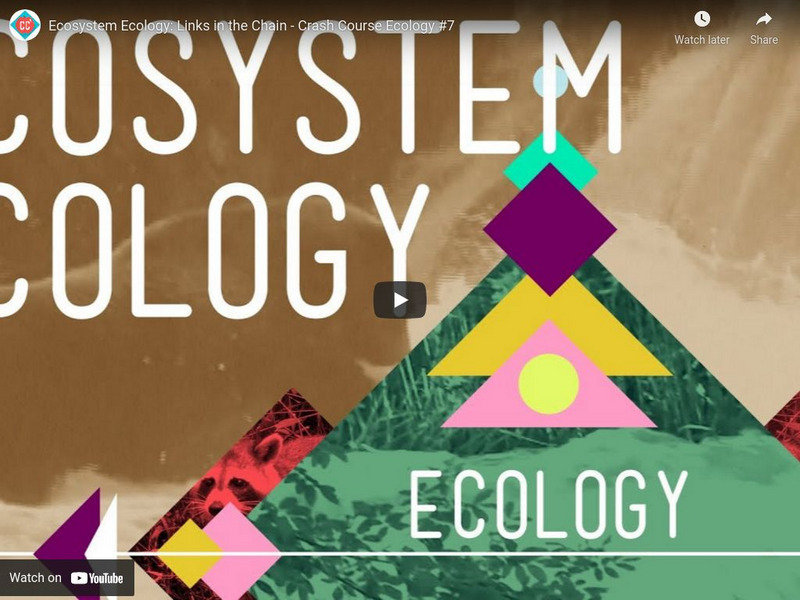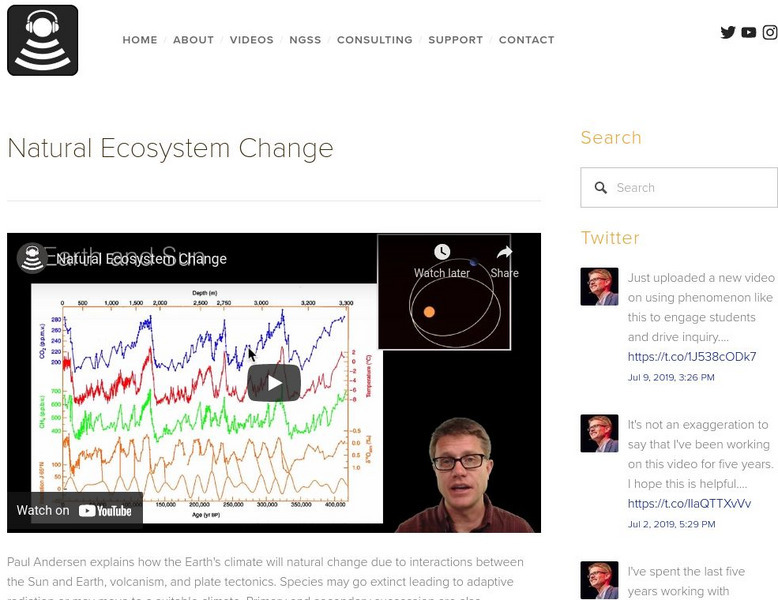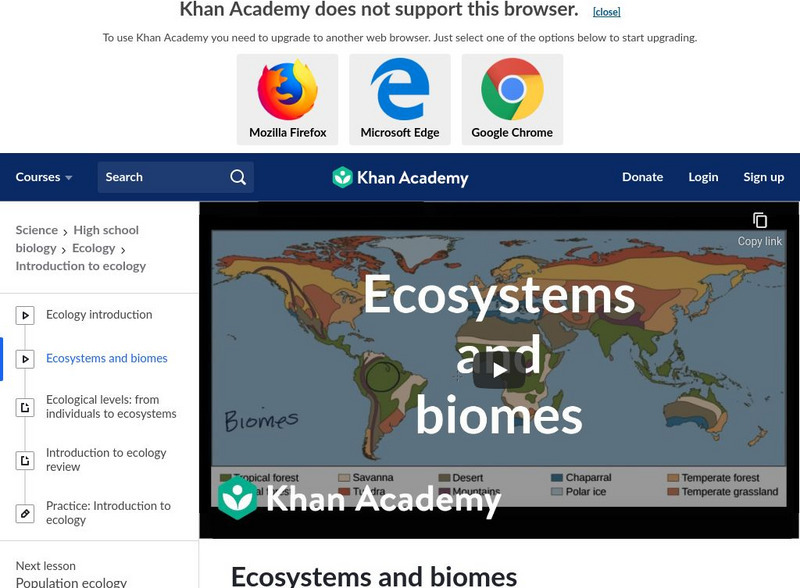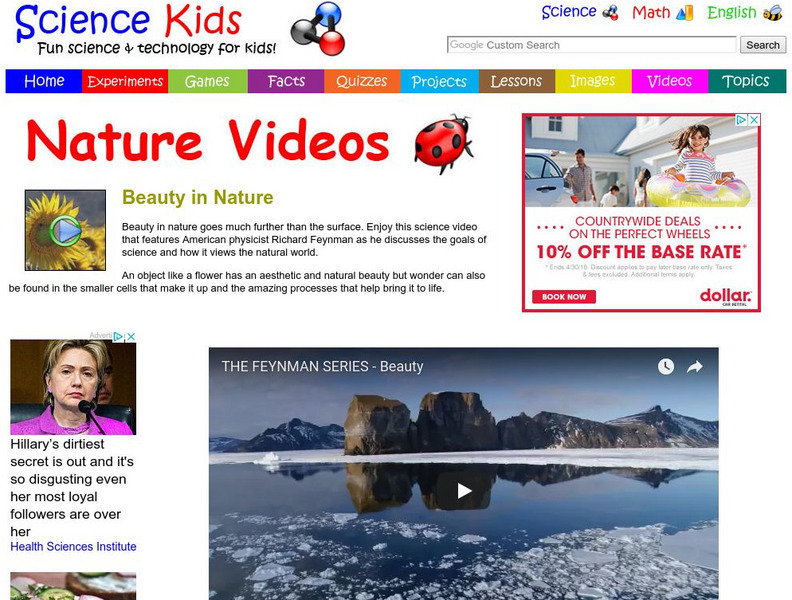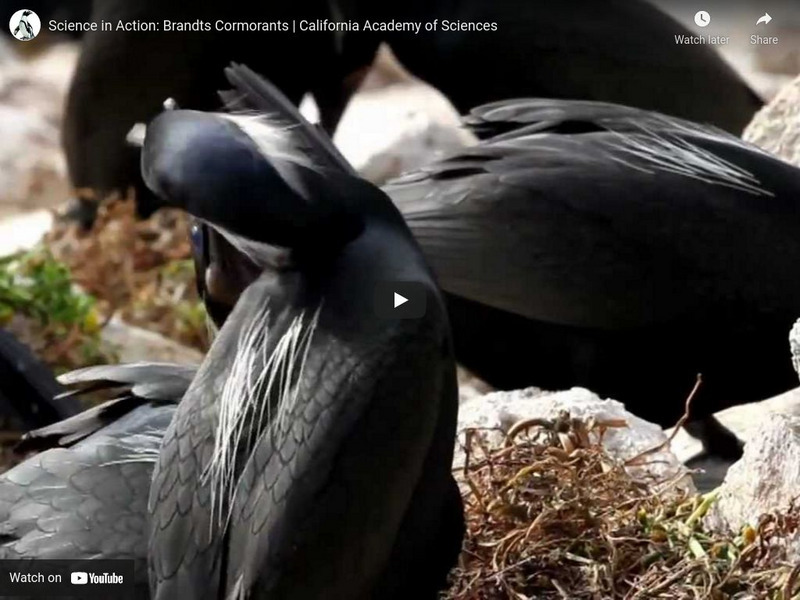Hi, what do you want to do?
PBS
Pbs Learning Media: Living on the Coast
This video, adapted from material provided by the ECHO partners, illuminates how living on the coast affects individuals and communities, particularly humans' interrelationships with natural resources. [7:08]
PBS
Pbs Nova: Rat Attack
Every forty-eight years, a species of bamboo in India produces its seeds en masse, causing a major disruption in the ecosystem, which precipitates a mass influx of rats. This video explores this phenomenon and the repercussions. A...
Smithsonian Institution
National Museum of Natural History: Qrius: Ecosystem Change Plotting With Plant Collections
Plants are a resource that can help scientists measure change. This webcast digs into how plant specimens are studied to better understand ecosystem changes. [29:14]
PBS
Pbs Learning Media: Flood Plain and Higher Ground Habitats
This video segment from NatureScene features the area of the Congaree Swamp where the high ground and the flood plain meet. Learn how a few feet of difference in elevation on a floodplain can yield drastic changes in what you'll find...
PBS
Pbs Learning Media: River Rewilding: History and Economy of the Grand River
A description of the Grand River Revitalization Project is given on this video. Learn about how the economy and culture of the people who lived along the river was shaped by the Grand River. [3:59]
PBS
Pbs Learning Media: River Rewilding: Project Summary
A video where students share their place-based project and its affect on the Rapid Restoration of the Grand River and downtown Grand Rapids. [3:54]
PBS
Pbs Learning Media: Dinosaur Train: Living Together in an Ecosystem
In this Dinosaur Train clip, Mr. Conductor explains to the Pteranodon kids that all creatures have their own part to play in an ecosystem. This resource teaches students that all organisms in an ecosystem are connected, and the...
Science Friday Initiative
Science Friday: Michael Novacek and 'Terra'
An interview with Michael Novacek, author of Terra: Our 100-Million-Year-Old Ecosystem - and the Threats That Now Put it at Risk. He talks about the history of ecosystems and environmental threats the Earth faces. Includes link to a...
Other
Pearson Ole: Untamed Science: The Alpine Tundra Biome
Nearly every biologist studies biomes at some point in school. Not only is it required, but it's important to get a feel for what makes up different regions of the world.
Bozeman Science
Bozeman Science: Ecosystem Ecology
Paul Andersen explains how ecosystems function. He begins with a description of how life on the planet is ordered from large to small in biomes, ecosystems, communities, population, and individuals. He describes the major terrestrial and...
NPR: National Public Radio
Npr: Biosphere 2
Audio story presents information on the Biosphere 2 project, an attempt to replicate the world's biospheres in a controlled environment. Includes a map of the facility.
PBS
Wgbh: Peep and the Big Wide World: Exploring Small Spaces: Animals and Plants
Explore a small area in the woods to discover what tiny plants and animals live there. [1:25]
Other
Monkey See: What Is an Ecosystem?
Science expert Emerald Robinson explains what an ecosystem is and why they are important. [2:00]
Crash Course
Crash Course Kids 21.1: Home Sweet Habitat
How would a polar bear do if you put it in the desert? Not well. But why? Why can't anything live anywhere? Well, this has to do with habitats and how animals (including humans) are suited for living in one place over another. In this...
Crash Course
Crash Course Ecology #7: Ecosystem Ecology Links in the Chain
Hank brings us to the next level of ecological study with ecosystem ecology, which looks at how energy, nutrients, and materials are getting shuffled around within an ecosystem (a collection of living and nonliving things interacting in...
Bozeman Science
Bozeman Science: Ecosystem Dynamics, Functioning & Resilience
In this video, Paul Andersen explains how ecosystems respond to disruptions. Disruptions can cause changes in the number and variety of organisms. It can also lead to migration, extinction or even speciation. Ecosystems that have higher...
Sophia Learning
Sophia: Parts of an Ecosystem
A video lesson defining the basic vocabulary necessary to describe an ecosystem and its parts. Learn how the abiotic and biotic factors work together to form an ecosystem. [7:27]
Bozeman Science
Bozeman Science: Natural Ecosystem Change
Paul Andersen explains how the Earth's climate will natural change due to interactions between the Sun and Earth, volcanism, and plate tectonics. Species may go extinct leading to adaptive radiation or may move to a suitable climate....
Khan Academy
Khan Academy: Ecology: Ecosystems and Biomes
An introduction to ecosystems with how land ecosystems are classified into biomes. [7:32]
PBS
Pbs: Ladybug Pajama Party
This video explains the behavior of a ladybug species that spends most of its year feeding on the California coast and migrates inland for the winter.
Science Friday Initiative
Science Friday: Gardening With Native Plants
Rather than filling your home landscape with exotic plants from the local nursery or home center, why not plant species that should be in your landscape naturally? The idea of planting 'native plants' has received plenty of attention,...
Science for Kids
Science Kids: Nature Videos: Beauty in Nature
This video discusses the beauty of nature. [5:10]
PBS
Pbs Kids: Eeko World: Plants and Animals
Interactive material and animated video for kids to learn about the ecology of plants and animals, and what they can do to protect the environment.
California Academy of Sciences
Ca Academy of Sciences: Brandts Cormorants
Are Brandts Cormorants on the Farallon Islands indicating problems in the local marine ecosystem?






